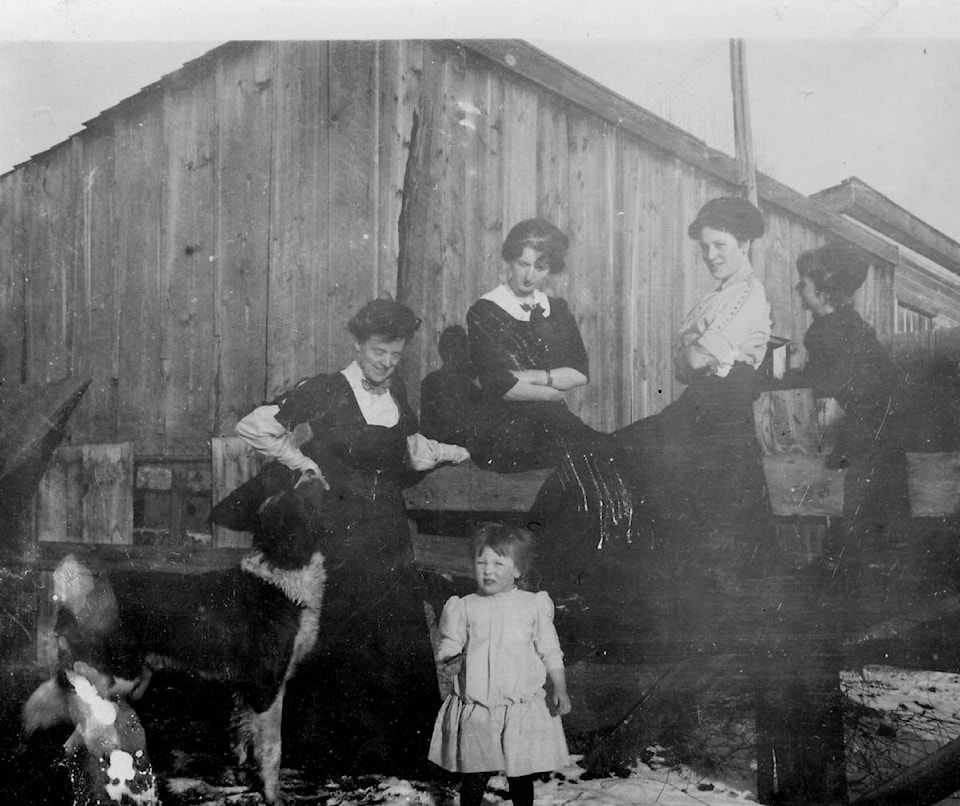The third and last living child of Mary Surtees Murphy, Alfred Lincoln Seward, died Jan. 4, 2018 in Moose Jaw, Saskatchewan just shy of his 95th birthday.
Mary, born in 1881, was married to James Murphy, a local hydraulic miner in Barkerville. She was Oxford educated and had worked in Belgium as a governess before working at the same occupation in Quesnel when she met James. They had two children.
After James enlisted during World War I and Mary was pregnant with their second child, she travelled with daughter Eileen in June 1914 by stagecoach to Quesnel, where they caught the boat to Fort George, and then took the train from there to Quebec City. There, mother and daughter boarded a ship for England.
They stayed with her father and family at the family estate Summergrove in Cambria until the summer of 1916, when she and the two children, Eileen and James, returned to Quesnel.
Mary owned a small house in town at the time, until November 1916 when she learned her husband had died on Oct. 18, 1916 as a result of a gunshot wound to the back. She then sold the Quesnel house and moved to Victoria.
From Victoria, she moved to West Demars on the Upper Arrow Lake, where she took a job as the postmistress.
She met her second husband, Arthur Thomas Seward, at West Demars in 1920.
They were married in Nelson and their son, Alfred Lincoln Seward, was born in February 1923 at Nakusp.
Mary was 42 when Al was born, and mother and child returned from Nakusp on the SS Minto.
Arthur Seward was the grandson of the Chief of the Thompson Band people at Lytton in 1870.
His father, Thomas Williams Seward, was the leader of some prospectors who came from California and were the first to find gold at the Forks of the Quesnel River, a pioneer of the Cariboo Gold Rush.
After his time in the Forks, Arthur Seward settled in Lytton. He became friends with then Premier Richard McBride who had the Times Colonist in Victoria write his life story in serial form, which was published in 1906.
Mary was quite the real estate investor. She bought 10 acres at West Arrow Park on the Columbia River in 1911 – intending to start an orchard.
In 1932, when she heard there was to be a bridge built to the north shore (Lion’s Gate), she bought five lots in West Vancouver and over a few years built houses on the lots. The houses were rented out and inherited by her children. She continued to live in the log house in Arrow Park until her death in 1944. The house had no water and no power.
She was a woman ahead of her time and a true British Columbia pioneer.
Her last child, Alfred Seward, graduated from high school in West Vancouver in 1941 and immediately joined the RCAF.
He became a pilot and flew convoy patrol over the North Atlantic out of Newfoundland. When his tour was finished, he went to Scotland, qualified in Sunderland Flying Boats and was then stationed in Burma where he fought against the Japanese forces. He was awarded the Atlantic Star and the Burma Star, one of less that 100 Canadians to receive both awards.
He returned to the RCAF in 1951 as a flying instructor and completed his career at Trenton in 1970.
In 1971, he began flying water bombers out of Victoria over B.C., Alberta and Manitoba. His last water bomber assignment was in Norway in 1983, when he retired.
He became a cabinet maker in Moose Jaw, Saskatchewan.
–Richard Dowson is a descendant of Mary Murphy. “I was able to follow the life of Mary Murphy while in Quesnel and Barkerville through the Quesnel museum and Archives, which is an incredible asset. Quesnel residents must be very proud of their remarkable Museum and Archives and the resourceful people who work there.”
